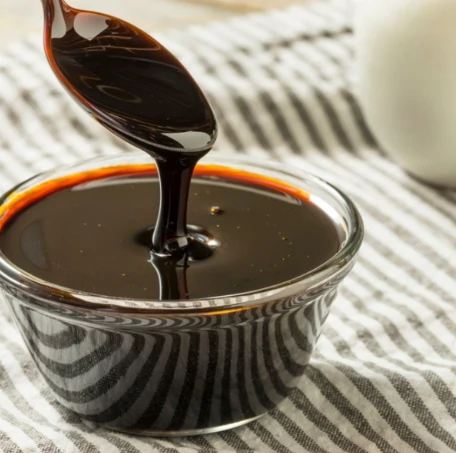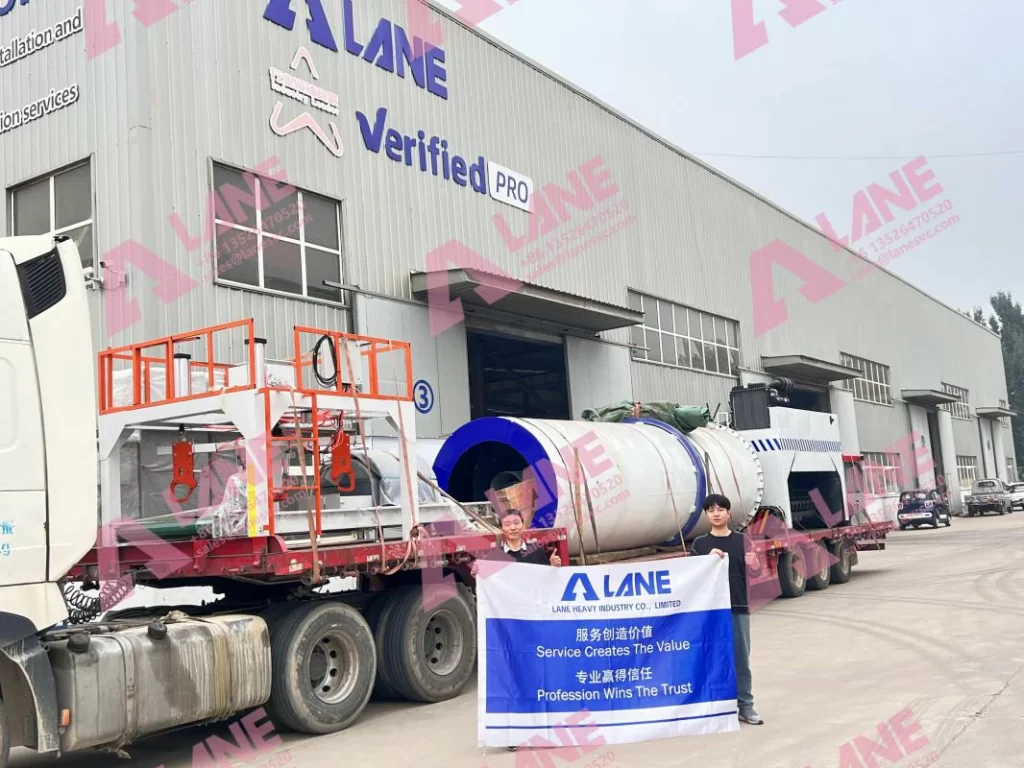The over reliance on the the chemical fertilizer is effecting the agriculture sector as it leads to soil degradation, water pollution and decline in corp vitality. The agricultural industry also facing the challenge of disposing of organic waste by product. Sugar industry is the prime example of this. It generates large amount of residue like bagasse, press mud , and molasses. The solution is sugar residue organic fertilizer production line.
It not only solves the problem of waste management, it also creates green economical value.
This article explain the process of a sugar residue organic fertilizer production line, detailing each steps of the raw material handling and how LANE organic fertilizer production line can help you with this Process. Furthermore, we will explore the agricultural, economic, and environmental benefits of this process.

The Production Flow: A Step-by-Step Journey from Residue to Resource
A well-designed production line is balanced, systemic and efficient ensuring the raw materials quality remains stable and take those raw materials to create a high quality end product. To create a sugar residue organic fertilizer production line, LANE follows the following process:
1.Raw Material Handling
The journey begins with the collection and preparation of raw materials. The primary raw materials may includes:
Press Mud : This is the residue from the clarification of cane juice, rich in organic matter, phosphorus, and calcium.
Bagasse: This is the fiber that remains after a sugar cane is crushed to extract its juice. It is an excellent source of carbon. It also improves the physical structure of the compost.
Molasses: This is the thick,dark syrup produced during sugar refining. It has high amount of potassium, carbohydrates, and trace elements, and it acts as a microbial nutrient source during composting.
Supplementary Materials: other organic materials like animal manure, crop strew often added to achieve an optimal Carbon-to-Nitrogen ratio for efficient composting.
Those materials are then properly weighted and transferred to composting area to compost.
2.Composting
Composting is a biological process where microorganisms breaks down organic matter to create nutrient rich humus. The prepared mixture of press mud, bagasse, and other materials is formed into long piles known as windrows.
Aerobic Digestion: The process is aerobic, meaning it requires oxygen. LANE compost turner is used to turn the windrow, which allows for oxygen to enter. It regulates temperature, and ensures uniform decomposition.
Temperature Phases: The windrows goes through moderate temperature, then high temperature and curing phases. The high temperature phase is critical for eliminating pathogens and weed seeds.
This process can take several weeks. The compost is considered mature when it is dark, crumbly, and has an earthy smell.
3.Feeding, Crushing, and Mixing
Once the composting process is complete, it is ready to be moved into the next stage of refinement.
Feeding : LANE foklift silo or LANE dynamic batching system is used to feed the raw material to the production line. LANE dynamic or static batching system is equipped with weight and measuring sensors. Making the production line more accurate.
Crusher: After composting materials often contain small lumps. LANE vertical or horizontal crusher is used to crush them to powerder. It makes the granulation process easy and smoother granules.
Mixing: The crushed compost then moved in to LANE horizontal mixer. Here essential ingredients for formula are mixed with composting raw materials. Those may include specific beneficial microbial, nitrogen fixing bacterial and water. binder like molasses can also be added at this stage to adjust moisture content.
4.Granulation:
The powdered organic materials are transformed into durable, easy to handle granules. The LANE stirring pin granulator is the ideal machine for this process. It has over 97% granulation rate. The high-speed rotation of the pins inside the drum creates a violent, swirling motion, throwing the particles against the drum’s walls and into each other. This method is highly efficient and has a high granulation rate for organic materials
5.Polishing and Sizing
After drying and cooling some of the granules might have deformity, rough surfaces or vary slightly in size. The polishing machine tumbles the granules, rounding off sharp edges and smoothing the surfaces. This results in a more durable, dustfree granule that is less likely to break down during handling and storage.
Rotary Screen Machine: The polished granules are then passed through a rotary screening machine. This machine rotates and separate the granules into 3 streams.
Oversized Granules: Particles that are too large are discharged and can be crushed and recycled back into the process.
On-size Granules: The correctly sized product proceeds to the drying stage.
Undersized particles: These small particles are also returned to the crushers to be process as raw material, ensuring zero waste.
6.Drying and Cooling
It is essential to dry the granules to prevent them from deforming and caking. After coming out of the polishing machine all the granules are send to the dryer to prevent that from Happening.
For drying, the LANE rotary drum dryer is typically used. The on-size granules are conveyed through a large, rotating drum through which hot air is blown. This reduces the moisture content.
After drying the granules are immediately transferred to the LANE rotary cooler.
Cooler here forced air cools them down the granules to near room temperature. Cooling is essential to prevent moisture from entreating the granules during packing.
7.Packing Machine
The final cooled and screened granules are then conveyed to an automated packing machine. This machine can accurately weigh and fill the fertilizer into bags of various sizes. The bags are then labeled and are ready for sale.

The Multifaceted Benefits of a Sugar Residue Organic Fertilizer Production Line
Sugar residue to organic fertilizer production yields many positive result for the agricultural community.
Improved Soil Health: Organic fertilizers adds crucial humus to the soil which improves soil structure, enhances water retention, promotes aeration, and stimulates the growth of beneficial bacteria.
Slow Release Nutrition: The organic fertilizer releases the nutrition to the soil slowly. That gives the plants long time supply of nutrition, preventing the leaching and runoff common with soluble chemical fertilizers.
Enhanced Crop Quality and Yield: Studies consistently show that organic fertilization leads to improved crop quality, flavour, higher freshness. The crop grown with the organic fertilizers have higher shelf life while also supporting robust and sustainable yields.
Economic Benefits:
Waste to Wealth: Disposal of press mud, bagasse is a costly problem. But because of sugar residue to organic fertilizer plants this has became a financial opportunity.
Reduced Fertilizer Imports: Sugar mills and local agricultural community can become self sufficient in fertilizer production, reducing their reliance on exports.
Job Creation: The establishment of a fertilizer production line creates employment opportunities in rural areas.
Environmental Benefits:
Circular Economy: the organic fertilizer creates recyclable economy. The industrial waste from sugar industry has been repurposed and used as fertilizer for the local farmers. minimizing landfill use and environmental pollution.
Reduced Carbon Footprint: Organic wastes creates methane if not decomposed properly. By composting the organic waste from sugar industry we are reducing carbon footprint in the world.
Soil Carbon Sequestration: The application of this organic fertilizer increases the organic carbon content of agricultural soils, acting as a carbon sink and helping mitigate climate change.

Liquid Fertilizer Plant
While this article discussed granular solid fertilizer production line, but creating liquid fertilizer plant from sugar residue can unlock even greater economic value.
A liquid organic fertilizer plant specializes in producing liquid organic fertilizers which plants can absorb easily and creates lots of microbiological activity in the soil.
Creating a liquid organic fertilizer production line will help you tap into niche market. Many gardeners and flower enthusiasts use liquid organic fertilizer for their crop making it a nice product.
Flowers created from the liquid fertilizer looks more fresh and its easy to use in the flower shops.
Market Prospects and Conclusion
The market outlook for organic fertilizers produced from sugar residues appears highly promising. The organic fertilizer is gaining more and more favour among consumers and governments around the world is giving incentive for organic fertilizers. LANE sugar residue organic fertilizer production line adds economical value to the small community, individual or business who wants to make organic fertilizers.
As industries face increasing pressure to implement circular business models, this sugar residue organic fertilizer production helps sugar industry solves not only PR nightmare but gives them marketing materials while generating large amount of profit.
The organic fertilizer has a profit ratio from 10% to in some places 30%. It is cheap to create and has local demands which will keep increasing. In conclusion, the sugar residue organic fertilizer production line represents a technologically sophisticated approach to addressing multiple challenges simultaneously—sugar industry waste management, agricultural sustainability, and soil health enhancement.
LANE Heavy Industry helps company and independent buyers with not only machinery but also gives them design, helps them create formula and provide engineering support. Contact us to know more.
For more details, please feel free to contact us.
Henan Lane Heavy Industry Machinery Technology Co., Ltd.
Email: sales@lanesvc.com
Contact number: +86 13526470520
Whatsapp: +86 13526470520